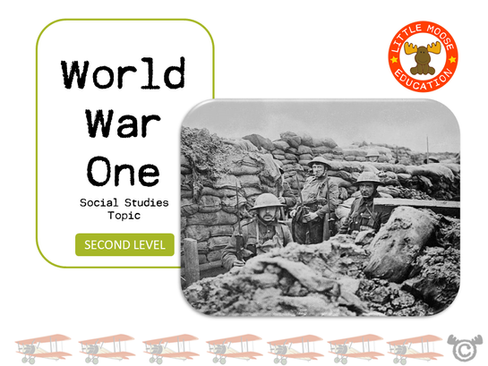The events at the end of World War I led to the rise of Hitler and the start of World War II. Take a look at the information below to find out more.
What happened during WWI?
World War I lasted for four years, three months and two weeks between 1914 and 1918. There were 17 million military and civilian deaths during the war which took place mostly in Europe. The war was fought on two fronts, one in the east and one in the west. The Central Powers, mainly Germany, Austria-Hungary and the Ottoman Empire, was defeated by the Allied Powers, mainly Britain, France, Russia and later the USA.
WWI was known for:
trench warfare
use of military machines like tanks and planes
devastating battles like the Battle of the Somme
the use of U-boats by the Germans

soldiers in the trenches during WWI
The Armistice Agreement was signed on November 11th 1918, this brought the war to an end.
Take a look at our WWI explainer video.
After WWI
In 1919 three of the world's leaders met to discuss what would happen after the war - David Lloyd George (UK), Woodrow Wilson (USA) and Georges Clemenceau (France). They came up with the Treaty of Versailles. The aim of the treaty was to maintain peace and to lay the blame at Germany's door. The defeated Germans were reluctant to sign the treaty but the Allies declared that war would resume if the treaty was not signed.

Front cover of the Treaty of Versailles
What was in the Treaty of Versailles?
Here are some of the most important points from the Treaty of Versailles
Germany had to accept full responsibility for the war.
Germany had to pay reparations of over £6 billion.
Germany had to reduce its armed forces from 6 million to 100,000 men.
Germany had to get rid of its submarines and military aircraft.
The effects of war and the conditions of the treaty had a huge impact on Germany. The economy collapsed, there was high unemployment and living conditions were harsh. But the Allies thought that as Germany was the aggressor during World War I the conditions of the treaty were justified, despite the impact it was having on the people of the country.
A Country on its Knees
What happened next? A man called Adolph Hitler saw an opportunity for power. Born in Austria-Hungary in 1889, Hitler had fought on the Western Front for the Central Powers in WWI. In 1921 he became the leader of a small political party called the National Socialist German Workers Party - it later became known as the Nazi Party.
Throughout the 1920's Hitler was a political troublemaker, he attempted to overthrow the German government in 1923 and was sent to jail, but he was undeterred. In 1929 the United States stock market crashed causing huge economic problems all over the world. Germany was in trouble.
Hitler and the Nazi Party took advantage of the terrible economic situation in Germany. They promised to rip up the Treaty of Versailles, rebuild the economy and provide jobs. These were all popular promises, the German people wanted a better life.
Hitler Becomes Fuhrer
In 1933 Hitler became German Chancellor and by 1934 he was Fuhrer. As Fuhrer he was the Head of Government and the Head of State, which made him a dictator - a leader with full power over a country and no checks and balances on their decisions. Hitler banned other political parties, he ended freedom of speech and he put his enemies in concentration camps or had them killed.
He spent his early years as Fuhrer rebuilding the German army and navy and preparing to expand the borders of Germany by any means necessary.

Adolph Hitler and Hermann Goring 1938
World War II Begins
By 1939, Hitler had declared Britain as his main enemy and that Poland must be taken in order to defeat the British.
In September 1st 1939 Hitler commanded the German army to march into Poland, two days later Britain and France declared war on Germany. This was the beginning of the bloodiest and most brutal war in history.
In a Nutshell
Germany lost WWI.
The Treaty of Versailles punished Germany.
Hitler rose to power in the 1920’s and 30’s.
Hitler started WWII by invading Poland.
Take a look at our WWII explainer video.
Learn about World War I and World War II with our comprehensive digital packs.
Download and teach with littlemoose.education












Comentarios